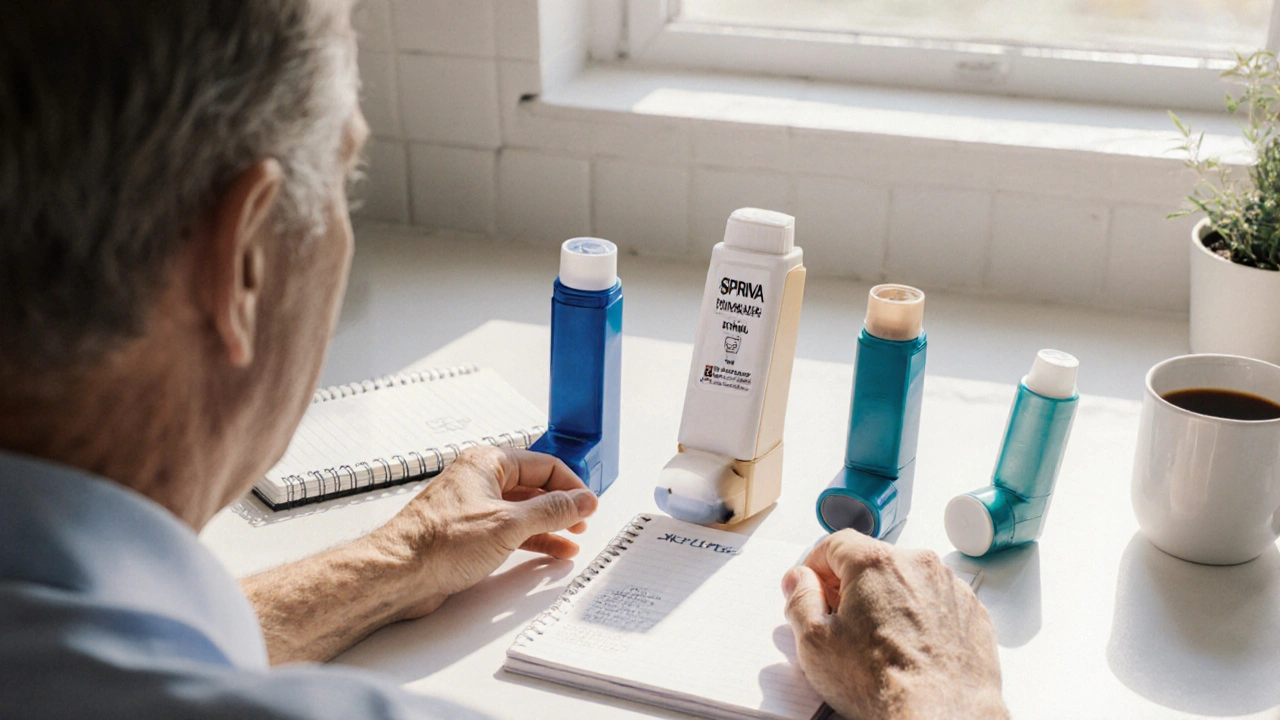When dealing with inhaler side effects, the unwanted reactions that can happen when using inhaled medication. Also known as inhaler adverse effects, they can range from mild throat irritation to more serious oral thrush. Knowing what triggers these issues helps you avoid discomfort and keep your breathing treatment effective.
One major group to consider is the Bronchodilator inhaler, a device that relaxes airway muscles to open breathing passages. These inhalers often contain short‑acting beta‑agonists like albuterol, which can cause jitteriness, rapid heartbeat, or a dry cough. Another key player is the Corticosteroid inhaler, a medication that reduces inflammation in the lungs. While they’re great for long‑term control, they frequently lead to hoarse voice, sore throat, and the dreaded fungal infection in the mouth if you don’t rinse after use. Both types share a need for proper inhalation technique—poor technique can increase deposition in the mouth and throat, amplifying side effects.
Even a Nasal spray, a medication delivered through the nose for allergies or sinus issues can affect inhaler tolerance. Using a steroid nasal spray alongside an inhaled corticosteroid can raise overall steroid exposure, subtly increasing the risk of oral thrush or systemic effects. On the flip side, a well‑chosen nasal spray can ease nasal congestion, making the inhaler’s drug reach deeper into the lungs and reducing the amount needed—potentially lowering side effect intensity. It’s a balancing act: match your inhaler type with complementary therapies and watch how they interact.
When you combine these devices, three semantic relationships emerge: inhaler side effects encompass oral thrush, proper inhaler technique reduces throat irritation, and nasal sprays influence overall steroid load. Understanding these links lets you tweak your regimen before problems flare up. For example, using a spacer with a metered‑dose inhaler spreads the medication, lessening mouth deposition and cutting the chance of fungal growth. Rinsing your mouth with water (and spitting, not swallowing) after each dose is a simple habit that dramatically drops the odds of thrush.
Beyond technique, lifestyle and health conditions shape how you experience side effects. Dehydration can dry out the airway lining, making any inhaled powder feel scratchy. Smoking or exposure to secondhand smoke adds irritants that magnify cough and hoarseness. Chronic sinus issues may cause post‑nasal drip, which mixes with inhaler residue and creates a persistent sore throat. Tailoring your environment—using humidifiers, staying hydrated, and avoiding smoke—helps keep side effects in check.
Now that you’ve got the main pieces—bronchodilator and corticosteroid inhalers, nasal sprays, and the habits that modify their impact—you’re ready to scan the list of articles below. Each one dives deeper into a specific drug, offers buying guides for cheap generics, or explains how to manage side effects for conditions like asthma, allergies, or even urinary issues. Use this overview as a map, then pick the pieces that match your own medication routine and concerns.

A detailed comparison of Spiriva (tiotropium) with its main COPD inhaler alternatives, covering efficacy, side effects, cost, and how to choose the right option.